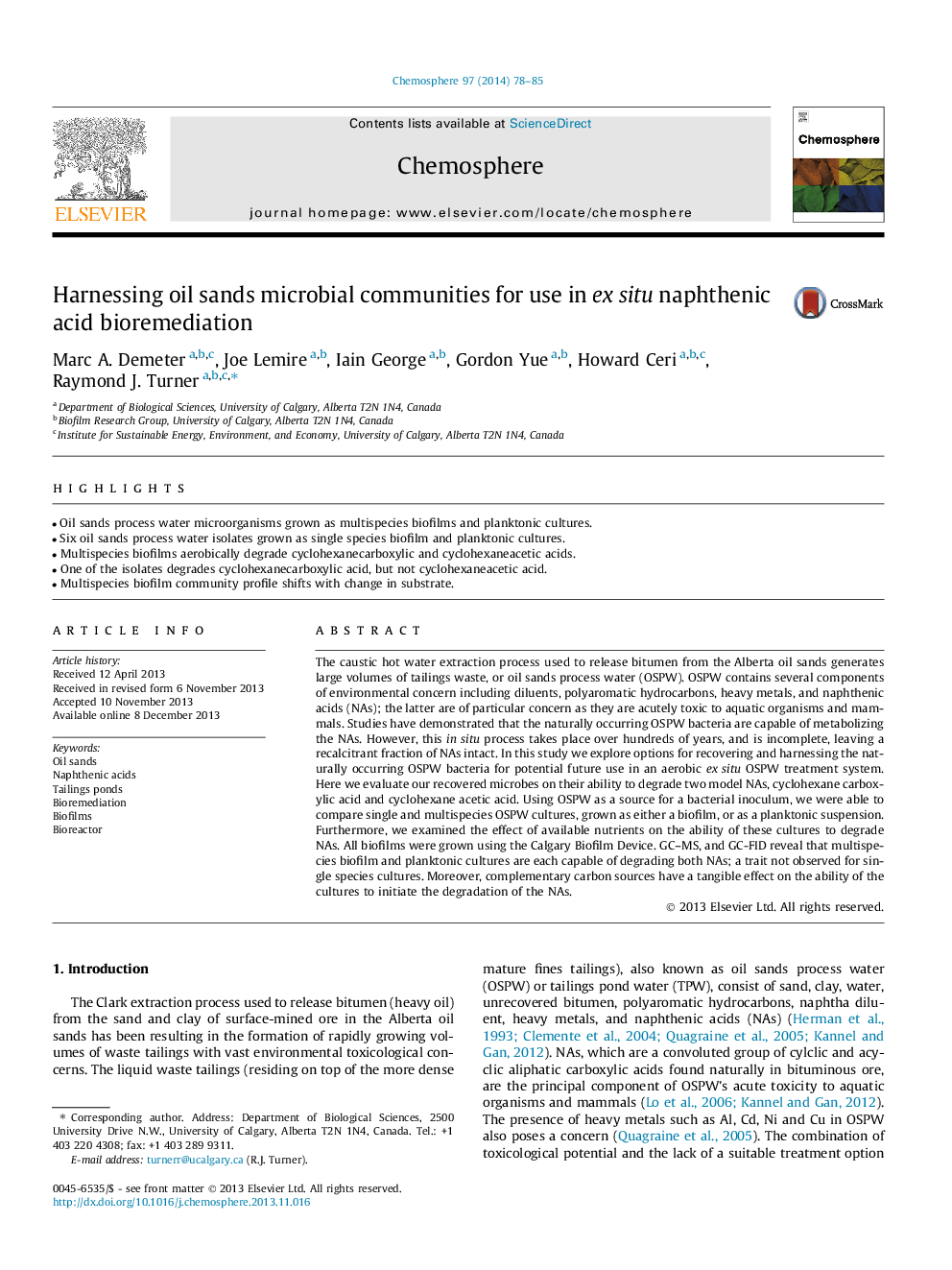| کد مقاله | کد نشریه | سال انتشار | مقاله انگلیسی | نسخه تمام متن |
|---|---|---|---|---|
| 4408988 | 1618874 | 2014 | 8 صفحه PDF | دانلود رایگان |

• Oil sands process water microorganisms grown as multispecies biofilms and planktonic cultures.
• Six oil sands process water isolates grown as single species biofilm and planktonic cultures.
• Multispecies biofilms aerobically degrade cyclohexanecarboxylic and cyclohexaneacetic acids.
• One of the isolates degrades cyclohexanecarboxylic acid, but not cyclohexaneacetic acid.
• Multispecies biofilm community profile shifts with change in substrate.
The caustic hot water extraction process used to release bitumen from the Alberta oil sands generates large volumes of tailings waste, or oil sands process water (OSPW). OSPW contains several components of environmental concern including diluents, polyaromatic hydrocarbons, heavy metals, and naphthenic acids (NAs); the latter are of particular concern as they are acutely toxic to aquatic organisms and mammals. Studies have demonstrated that the naturally occurring OSPW bacteria are capable of metabolizing the NAs. However, this in situ process takes place over hundreds of years, and is incomplete, leaving a recalcitrant fraction of NAs intact. In this study we explore options for recovering and harnessing the naturally occurring OSPW bacteria for potential future use in an aerobic ex situ OSPW treatment system. Here we evaluate our recovered microbes on their ability to degrade two model NAs, cyclohexane carboxylic acid and cyclohexane acetic acid. Using OSPW as a source for a bacterial inoculum, we were able to compare single and multispecies OSPW cultures, grown as either a biofilm, or as a planktonic suspension. Furthermore, we examined the effect of available nutrients on the ability of these cultures to degrade NAs. All biofilms were grown using the Calgary Biofilm Device. GC–MS, and GC-FID reveal that multispecies biofilm and planktonic cultures are each capable of degrading both NAs; a trait not observed for single species cultures. Moreover, complementary carbon sources have a tangible effect on the ability of the cultures to initiate the degradation of the NAs.
Journal: Chemosphere - Volume 97, February 2014, Pages 78–85